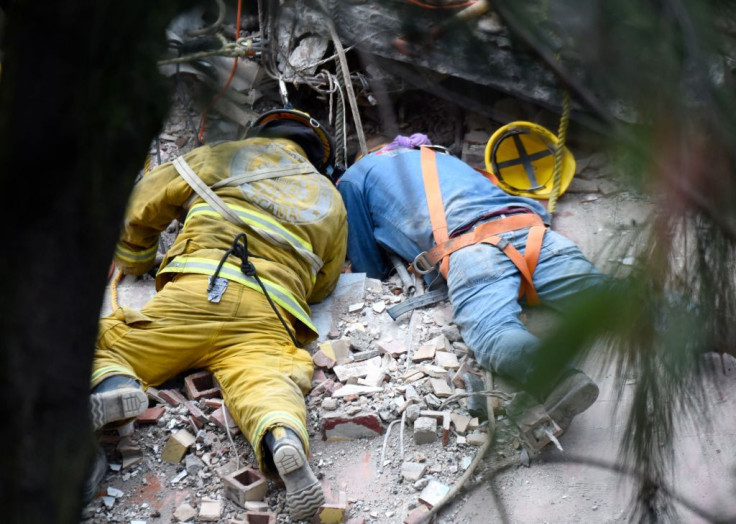
On September 19, 2017, the National Seismological Service reported an earthquake in Mexico of 7.1 magnitude located in the state limit between the states Puebla and Morelos, about 7.4 miles southeast of Axochiapan, Morelos and 74.5 miles from Mexico City.
The National Coordinator of Civil Protection, Luis Felipe Puente, reported that the death toll for the 7.1 magnitude earthquake rose to 248. The Ministry of the Interior issued an extraordinary emergency state and reported that the epicenters of the earthquakes were in Axochiapan, Morelos, and Chiautla, Puebla. They also reported that Mexico City registers the largest number of victims, with 117 deaths, while in the state of Morelos, 55 were reported to have died.
Searchers are looking for faint voices in the rubble, and using trained dogs and their hands to reach any survivors. "We dug holes, then crawled in on our bellies," volunteer rescue worker Pedro Serrano, a 29-year-old doctor, told The Associated Press. "We managed to get into a collapsed classroom. We saw some chairs and wooden tables. The next thing we saw was a leg, and then we started to move rubble and we found a girl and two adults — a woman and a man."
Serrano confirmed 25 bodies were recovered from the Enrique Rebsamen school after it collapsed; 21 of the victims were children and the other 4 adults. He said he found all the people in a classroom dead.
At least 24 other children at the school were rescued and taken to a medical center.
The Emergency Care Fund is now active, with the intention of using the resources to meet the food, shelter and health needs of the affected population.
He convocado al Comité Nacional de Emergencias para evaluar la situación y coordinar acciones. El PlanMX ha sido activado.
— Enrique Peña Nieto (@EPN) September 19, 2017
In Mexico City alone and according to preliminary information, 41 buildings collapsed.
Ayúdanos a identificar los daños estructurales en construcciones en la siguiente liga: https://t.co/jEXCmdCBbZ pic.twitter.com/XovFX4lvAR
— gob.mx (@gobmx) September 20, 2017
Mexican president, Enrique Peña Nieto, reported that there is at least one command of the armed forces at the sites of the landslides, to organize brigades and groups of volunteers. "Thousands of members of the Army, Navy and Federal Police are assisting the population," Peña Nieto said in a statement. "We are in full coordination with the civil protection bodies, with the Chief of Government of Mexico City and the governors of the States of Mexico, Guerrero, Morelos and Puebla, the entities that suffered the greatest damages."
Las y los voluntarios de @CruzRoja_MX siempre presentes en auxilio a la población ??? pic.twitter.com/WCDe8H570n
— gob.mx (@gobmx) September 20, 2017
Recommending that nobody enter damaged buildings and houses, as well as reviewing electrical and gas installations, he added that "the priority at this time is to continue the rescue of those still trapped and to provide medical care to the injured."
He said the priority is to bring light plants to more than 40 places affected by landslides. "At the moment, 40 percent of Mexico City and 60 percent of the state of Morelos have no electricity. We have reinforced the brigades of the Federal Electricity Commission to restore it as soon as possible," he said. After the earthquake, the capital of the country became chaos due to vehicular traffic jams, lack of electricity and telephone signal, as well as several people who needed immediate help.
According to the National Seismic Service, Mexico is in an area of high seismicity due to the interaction of 5 plates tectonics: The plate of North America, the one of Cocos, the one of the Pacific, the plate of Rivera and the plaque of the Caribbean. For this reason, the occurrence of earthquakes is not rare. The National Seismic Service reports on average the occurrence of 40 earthquakes per day.
NOTE: The information contained in this report should not be considered final. The National Seismic Service continues to receive new seismic data and with them, adjusting, renewing and improving the accuracy of seismic event parameters.
© 2025 Latin Times. All rights reserved. Do not reproduce without permission.






